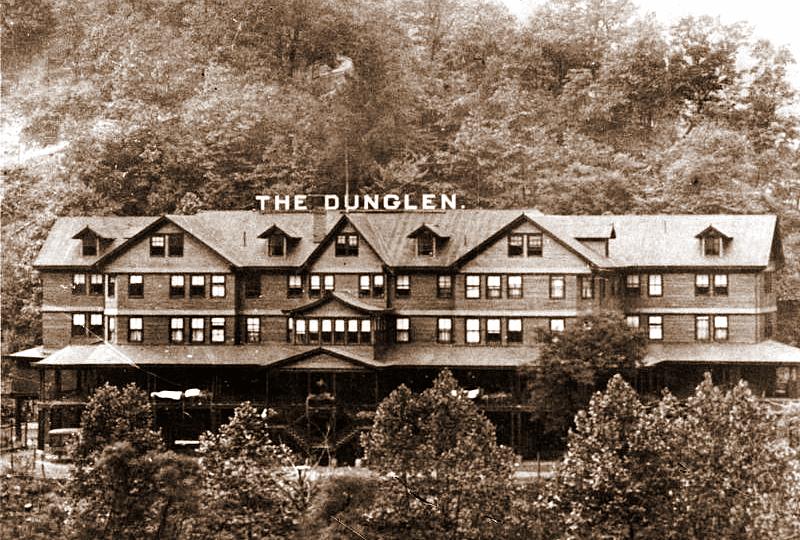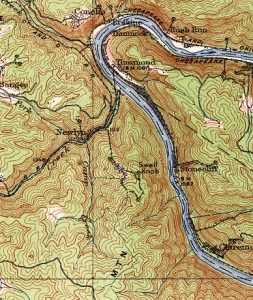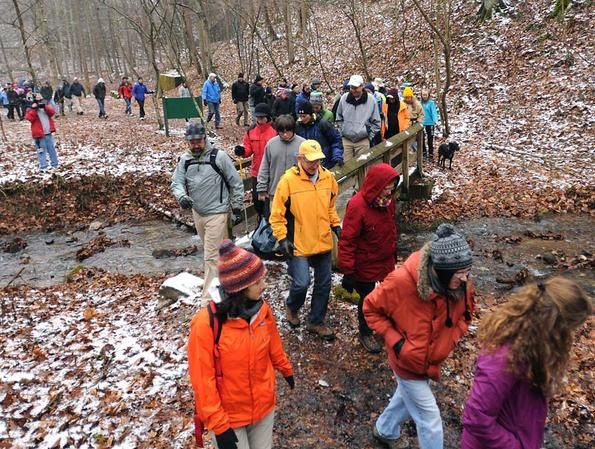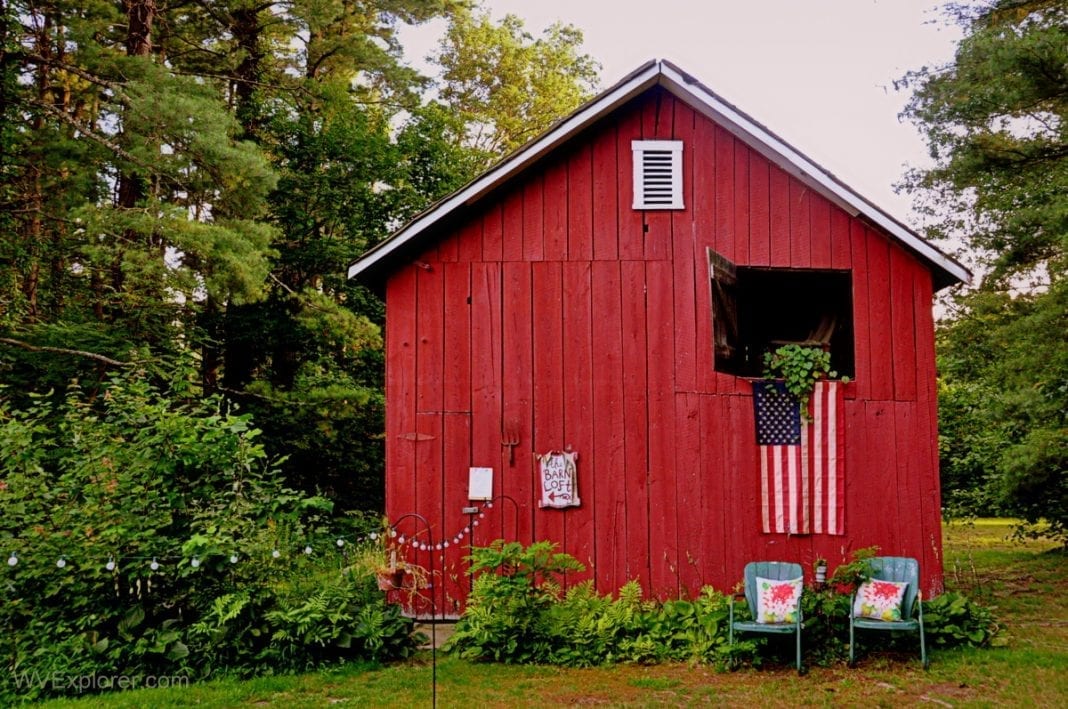A little-known, practically inaccessible ghost town in the mountains of southern West Virginia may soon be open to those willing to hike there — once the National Park Service opens a new recreational trail.
Little remains today of Dun Glen, perched 700 feet above the New River, perhaps the most unapproachable of many former coal-mining camps that line the walls of the New River Gorge.
A stone powder-house, a few foundation stones, and a remote cemetery are among the few obvious ruins that remain here in the shade of Sewell Knob, lingering silently in an upland forest through which few people now walk.
Once accessible only by a tramway and primitive wagon roads, its last resident may have left by about 1935, according to Andrew Steel, a geographical information specialist employed by the park service and one of few people to have visited the ruins in recent years.
The park service is engaged in building a trail from the valley below near Thurmond, West Virginia, into the upland area adjacent to the Summit Bechtel Family National Scout Reserve, the chief recreation center for the Boy Scouts of America and site of its national Jamboree.
The trail will access the area near the Dun Glen ruins and particularly near the more remote Dun Glen cemetery, a landmark that Steel said he was particularly moved to find.
"I'd heard of the graves from a 'coon hunter who said he stumbled across them in the night," Steel recalled.
"It took me several tries, but finally after standing quietly and looking carefully, I spotted them — a few field stones and a rusted marker made of some sort of metal."
Steel said he believed the graves were of children who died while the town was active, possibly before 1920, though the most recent burial was that of an adult woman who wished to be buried there and whose coffin was carried up the mountain.
Historian Lloyd Gibson is the author of one of the few published histories of the community, which was likely named for the Dun Glen Hotel, a posh establishment built in 1901 at the base of the mountain to serve affluent visitors to the region.
"Mining operations at Dun Glen opened in about 1904 or 1905," Gibson writes. "The Annual Report for the year ending June 30, 1904, indicated that the Dunglen was currently under development and that the side-tracks to the mine were in the process of being built."
"The mine was operated by Leo Schaeffer and James Fenimore, and a company store and miner's houses were maintained by the coal company. A steep switch-back wagon road led up to the mine from behind the hotel.
"Coal from the mine was hauled from the mine opening by a dinky engine to the mine headhouse were the coal was transported by a monitor incline, 1,250 feet in length, to a tipple on a spur track about a half-mile up the C&O Loup Creek Branch from South Side Junction and about one mile from Thurmond."
Read also: World Scout Jamboree to crowd middle New River Gorge July 22-August 2
A 1913 mapping of the town by the U.S. Geologic Survey shows 22 structures, three mines, and a system of railroads. A 1932 map shows six remaining structures and one mine.
By 1969, the town and mines have disappeared and a series of strip mines have opened along the contour of Sewell Knob and an adjacent peak.
Gibson notes that Sewell Knob is often incorrectly mapped as Swell Knob, a peak upstream along the New River near Hinton, West Virginia.
Located within the national park, the site is publicly accessible, though all but the most intrepid hikers may wish to wait until the trail is completed.
Be sure to join our free e-newsletter for an update on the trail's completion.



